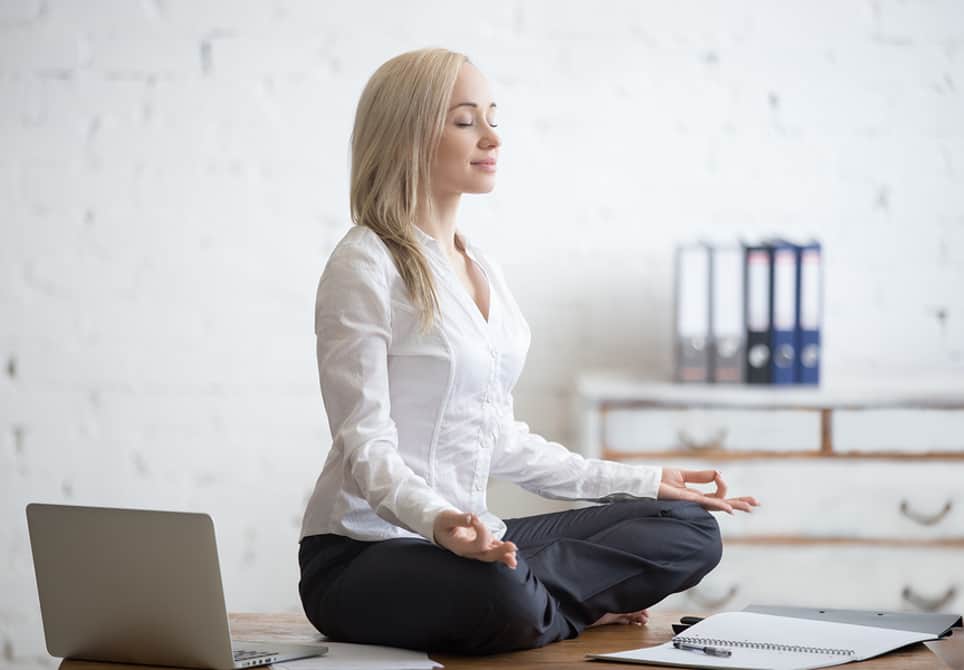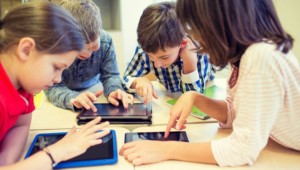Is Meditation the Game Changer Teachers Have Been Looking For?

When I hear about the stressful careers of my friends and family, I quietly listen and shamelessly compare their idea of stress to mine. While I acknowledge the realness of an important deadline or a year-end evaluation, I often wonder how the same family member or friend would handle the stressful environment of an urban classroom.
Teachers have deadlines too, except those deadlines are mixed with daily lessons, photocopies and two hundred complicated teenagers that get to decide each day whether to show up or not. Oh, and the supervisor evaluation? Try performing under the pressure of your principals’ eyes in a classroom of 35 when your lesson is interrupted by cell phones every five minutes, a rude remark every ten minutes and a couple late comers who refuse to admit the fault of their tardiness.
There is no doubt about it, teaching is stressful. Not only is it stressful, but it is devastating, infuriating, dynamic and painfully beautiful. During my first year teaching, I failed to find a means of coping with this ongoing emotional rollercoaster. By December of my second year, I was still struggling and approaching an emotional breaking point of tears and distress.
The unpredictability of my classroom was driving me insane. One day, my job seemed like a piece of cake. The students would be attentive, polite and all around successful. The next, things were being thrown, I was being called names and the period would pass without a fraction of the lesson actually being completed. I felt like a failure two out of five days a week.
I began to lose sleep, my weekends weren’t spent relaxing but worrying about the coming week and my evenings would end with hours of self-pitying. I was irritable, angry and defensive to anyone who dared judge my misery. Something had to change.
While teachers of the past may have coped with classroom chaos by lighting a cigarette or sipping their whiskey/coffee cocktail mid-lesson (did this actually happen?!) modern teachers need a less aggressive option with years of ancient anecdotal evidence to back it up.
Making Some Headspace
Over Christmas break, a family member suggested meditation. I knew of the practice but somehow I didn’t feel that breathing and sitting still would solve anything, especially when lessons needed to be made, progress reports needed finishing and emails remained unread day in and day out.
Despite my low expectations based on a preconception that included ancient gongs and hours of sitting cross-legged while your feet slowly lose sensation, I gave it a go. I downloaded a popular app (Headspace) and surrendered to the sweet voice lulling me into deep ten-minute sessions of breathing, focusing and generally forgiving myself for having such complex and debilitating emotions.
Though the effects were not immediate, months after introducing the practice something interesting happened.
Near the beginning of February, one student was attacking another student’s Snapchat that she had posted the period before, cueing a battle in the back row of my third period. A few other students got involved, loud remarks were thrown and I had to step in. Normally in this situation, my heart rate rises, my cheeks flush red and I stumble on my words. But, not this time. This time, something beautiful happened.
In this difficult moment, instead of losing my cool, my focus sharpened. I took a breath, gently identified the two girls who started the conflict, removed them from the room, defused the situation in the hallway and then returned to the room where I was able to calmly resume the lesson.
Woah. What just happened?
I felt, for the first time, a laser focus during the confrontation, giving me the confidence to execute the most correct and efficient de-escalation strategy. Now, I know that many other things were at work here, including the passing of time and the gaining of experience. But when other teachers began to recognize a change in me as well, I knew some serious growth had occurred.
The head of my department came down my hallway one day and gave me the most important compliment of the year. “You know, it has felt different down here lately. Calmer, or something.” I knew what he said was true. Maybe things were calmer because my students were picking up on my meditative vibes as of late, or maybe it was my switch from coffee to herbal tea that kept things at a lower key.
Who knows? But what I will say is I meditated every day that second semester and continue to meditate now. My anxiety certainly didn’t disappear entirely and I still get nervous each time I know I will be observed, but I generally do not fear going to work any longer.
Why do I think meditation worked? It gave me ten minutes a day of focusing solely on my body and my breath. Without external stimuli, I began to understand more about how the stressors of the daily grind were affecting my state of mind. This understanding has improved my ability to control my emotions, especially when it feels like things are getting out of hand.
Ultimately, I know my teaching practice has improved while under the influence of meditation. Less class time is wasted on trivial arguments. My mind is clearer throughout the day. And most certainly, I am able to unwind appropriately. Meditation is not a magic pill, but hey, who can’t benefit from a little deep breathing, right?
How Can You Regain Control?
The point of meditation is not just to introduce moments of silence into your life, but to get into a flow that can effectively distract from the overwhelming life of a teacher. This flow, however, can be found in many other ways, including varying styles of meditation and activities.
If Headspace is not your cup of tea, there are other sites such as Calm that offer short, relaxing meditations to ease your days of stress and to clear your mind during even the craziest weeks. If meditation is not your thing, yoga may be the answer.
Before diving into meditation, I also picked up yoga once or twice a week. Anything to keep your mind dedicated to something other than tomorrow’s lesson and yesterday’s classroom conflict. Personal tip: in addition to strengthening those arms and legs, buy into the breathing component of yoga. Movement matched with breathing will distract even the most anxious educator.
For more, see:
Stay in-the-know with all things EdTech and innovations in learning by signing up to receive the weekly Smart Update.






0 Comments
Leave a Comment
Your email address will not be published. All fields are required.